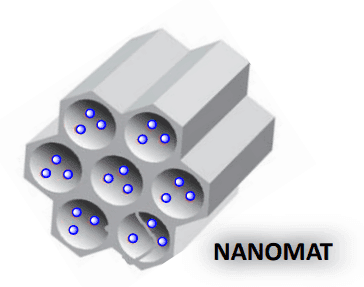Doctoral Thesis Defense in Materials Science and Engineering by Mr. Mohamed Boundor
Doctoral Thesis Defense in Materials Science and Engineering by Mr. Mohamed Boundor

CEDOC
The Euromed University of Fes (UEMF) is pleased to inform the public of the public defense of a doctoral thesis in ’’Materials Science and Engineering’’
The defense will take place on Saturday, February 24, 2024, at 9:30 AM at UEMF
Location: the Grand Hall of the Incubator (LOC001994) The thesis will be presented by Mr. Mohamed Boundor Under the theme:
“ Phosphate Ionic Liquids and Their Composite Materials for Applications in the Energy Field ”
Abstract
The growing demand for wearable electronics and electric vehicles has triggered the development of energy storage devices, such as batteries and supercapacitors, toward higher power density and energy density. Moreover, energy storage materials play a key role in efficient, clean, and versatile use of energy, and are crucial for the exploitation of renewable energy. This investigation focuses on synthesizing highly pure phosphate ionic liquids and phosphate viologens through a simple method involving N-quaternization of 1-alkylimidazole or 4,4'-bipyridine with a slight excess of trialkylphosphate. Subsequently, the combination of these building blocks with titanium dioxide by sol- gel chemistry allows for the generation of novel ionic liquid-TiO2 hybrids along with their carbonized materials. The covalent functionalization of TiO2 was carried out using various phosphate ionic liquids or phosphate viologenes, resulting in stable P-O-Ti bridges. Subsequent pyrolysis yields porous nanocomposite materials comprising phosphorus-doped TiO2 embedded in nitrogen-doped carbon material (N-C). These nanostructured electrode materials exhibit enhanced electrochemical performance owing to their large specific surface area, improved pathways for electrolyte diffusion, and increased electronic and ionic conductivity. Moreover, phosphate ionic liquids have also been employed in the preparation of LiFePO4/N-C composite cathode, providing a mesocrystalline structure and porous polyhedral particles that enhance accessibility to the electrolyte. The methodology for preparing hybrid phosphate ionic liquids-TiO2 materials demonstrated here can be adapted to other metal oxides, offering promising avenues for improving their conductivity. These advancements hold significant implications for various applications, particularly in the realm of energy storage.
Summary
The growing demand for wearable electronics and electric vehicles is driving the development of energy storage devices, such as batteries and supercapacitors, to increase power and energy density, which strongly depends on advances in the new materials used in these devices. Furthermore, energy storage materials play a key role in the efficient, clean, and versatile use of energy, and are essential for the exploitation of renewable energy. This study focuses on the synthesis of phosphate ionic liquids and phosphate viologens through the N-quaternization of 1-alkylimidazole or 4,4’-bipyridine with a slight excess of trialkylphosphate. Then, the combination of these phosphate ionic liquids with titanium dioxide via the sol-gel process enables access to new ionic liquid-TiO2 hybrids and their carbonized versions. The covalent functionalization of TiO2 with various phosphate ionic liquids
or phosphate viologens was carried out, creating stable P-O-Ti bonds between the organic and inorganic phases, which were confirmed by various characterization techniques. Subsequently, the pyrolysis of the functionalized TiO2 resulted in the formation of porous nanocomposite materials of phosphorus-doped TiO2 encapsulated in a nitrogen-doped carbon material (N-C). These nanostructured electrode materials thus prepared showed improved electrochemical performance due to their large specific surface area, improved electrolyte diffusion pathways, and enhanced electronic and ionic conductivity. The phosphate ionic liquids were also used for the preparation of the LiFePO4/N-C composite cathode, providing a mesocrystalline structure and porous polyhedral particles that improve accessibility to the electrolyte. This strategy for preparing phosphate ionic liquid-TiO2 hybrid materials can be easily adapted to other metal oxides, thus offering promising prospects for improving the conduction properties of these metal oxides. These advances have significant implications in various application fields, particularly energy storage.
This thesis will be presented before the jury members :
|
Last and First Name |
Institution |
Role |
|
Pr. Tijani BOUNAHMIDI |
Université Euromed de Fès, Morocco |
|



![[Call for Applications] Erasmus+ Mobility Scholarships at the University of Cordoba in Spain](/_next/image?url=https%3A%2F%2Fbackend.ueuromed.org%2Fuploads%2Ftemp_polytechnique_b74db3259b.jpg&w=3840&q=75)
![[Call for Applications] Erasmus+ Mobility Scholarships at Parthenope University of Naples in Italy](/_next/image?url=https%3A%2F%2Fbackend.ueuromed.org%2Fuploads%2Ftemp_polytechnique_57a112e81b.jpg&w=3840&q=75)
![[Call for Applications] Erasmus+ Mobility Scholarships at Mykolo Romeris University of Rokiškis in Lithuania](/_next/image?url=https%3A%2F%2Fbackend.ueuromed.org%2Fuploads%2Ftemp_polytechnique_a849c203d3.jpg&w=3840&q=75)
![[Call for Applications] Erasmus+ Mobility Scholarship at Parthenope University of Naples in Italy](/_next/image?url=https%3A%2F%2Fbackend.ueuromed.org%2Fuploads%2Ftemp_polytechnique_00137804a0.jpg&w=3840&q=75)